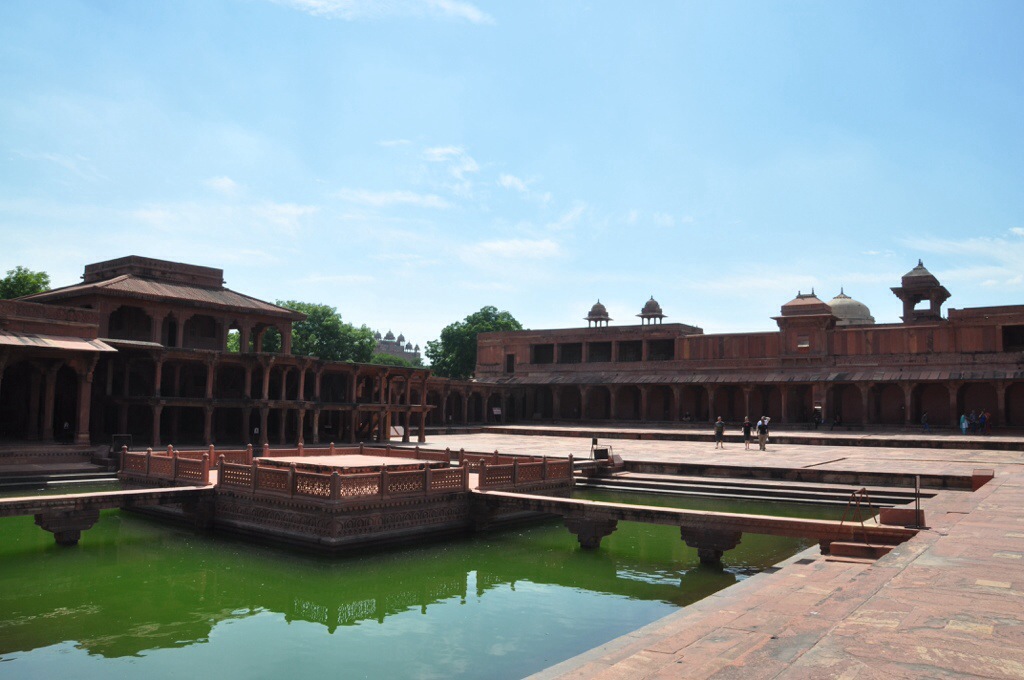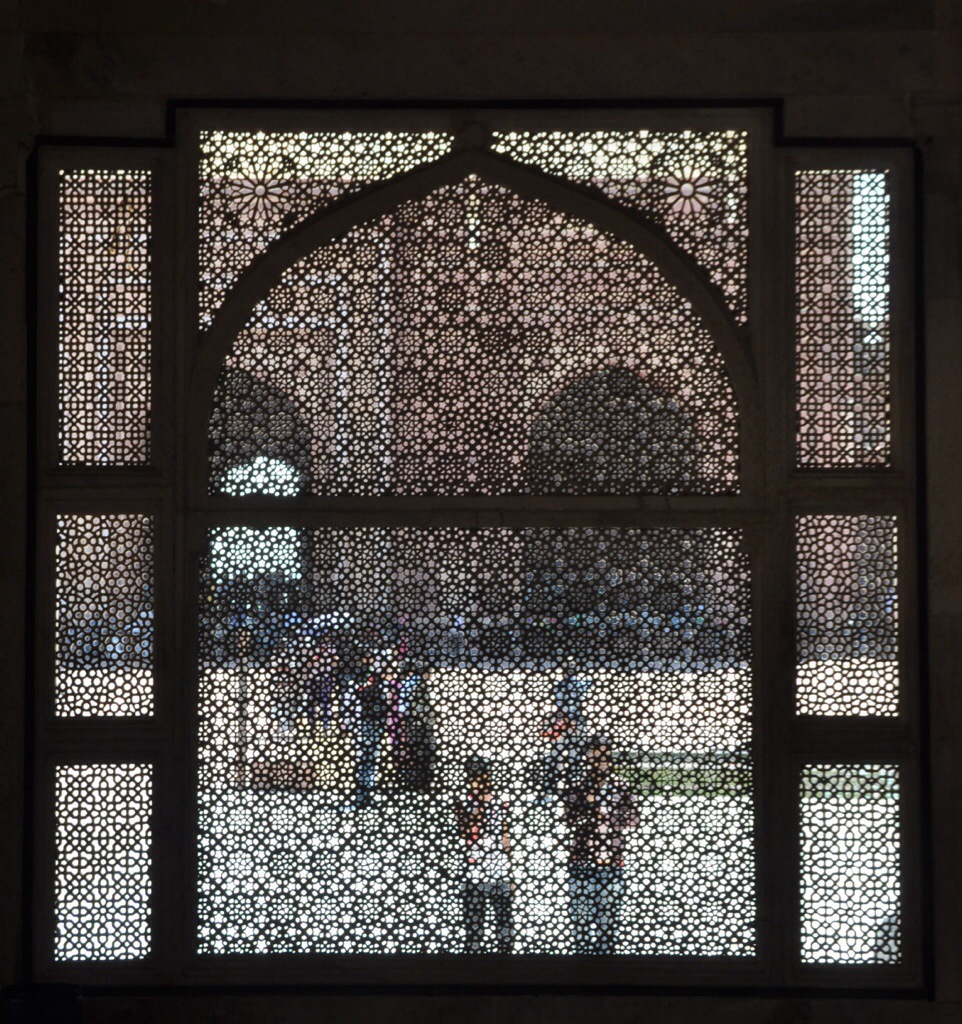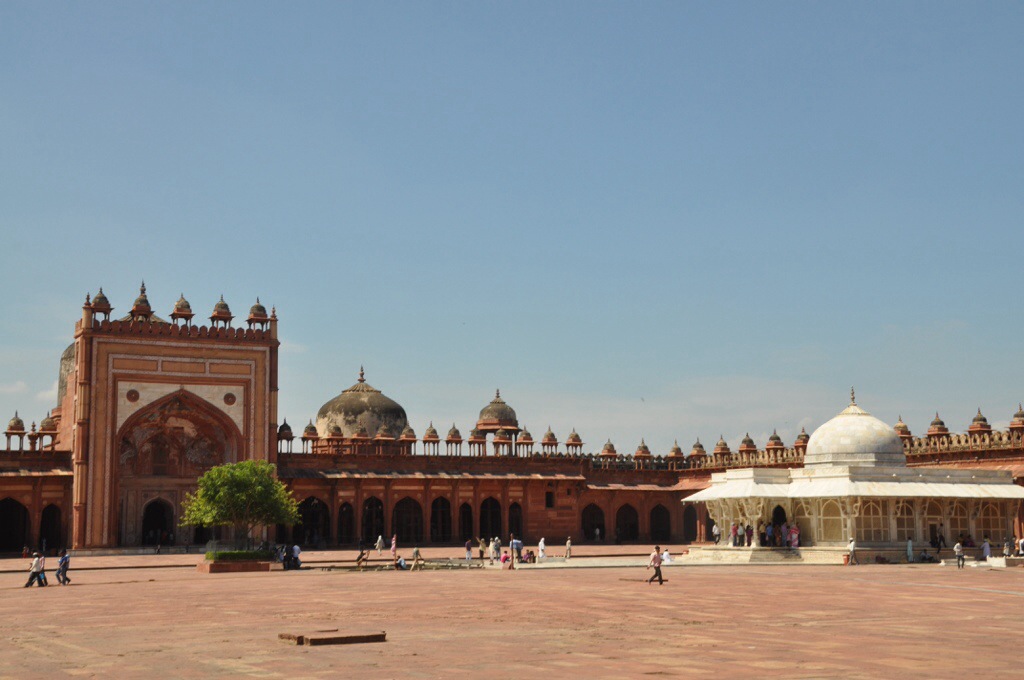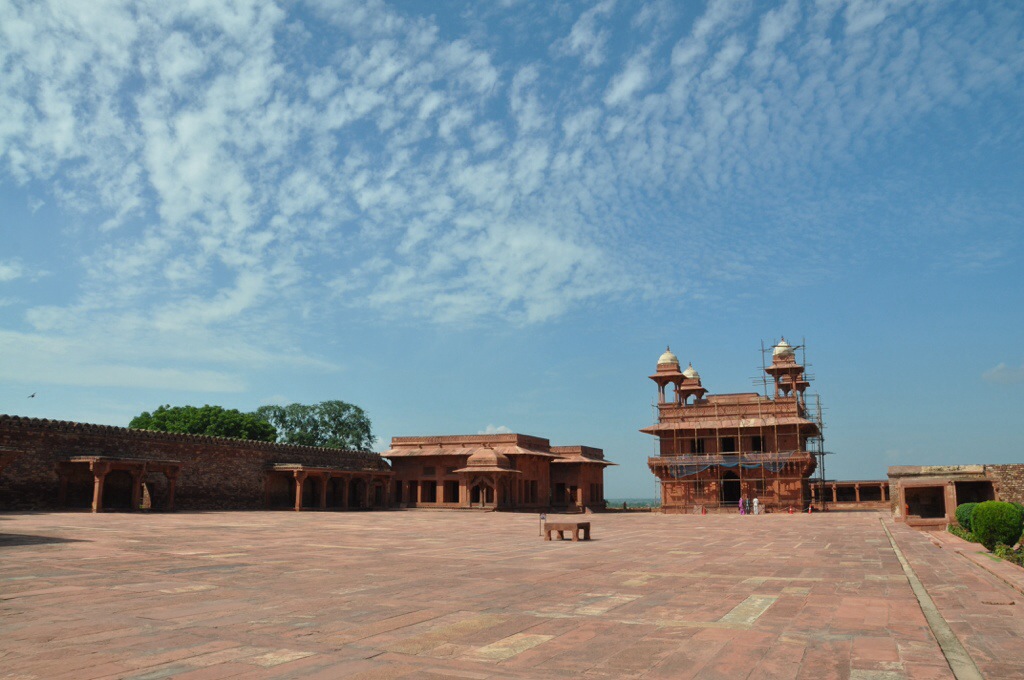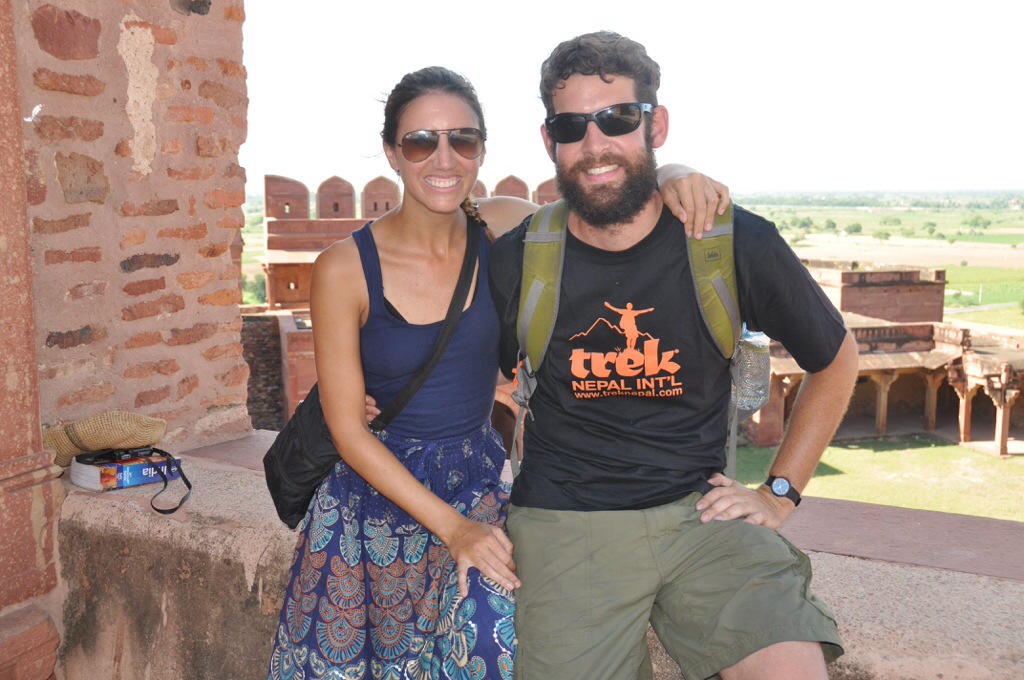Fatehpur Sikri
We had arrived in Agra, just minutes from the Taj Mahal, but we still couldn’t see the world-famous site and we decided to hold off seeing it until the next morning (sunrise is supposed to be the best time to view it). Instead, although it seemed like hearsay to not immediately go to the Taj, we spent our first day in Agra at the nearby city of Fatehpur Sikri.
Fatehpur is the location of a huge palace/fort/mosque complex constructed by a Mughal emperor a few decades before the creation of the Taj Mahal (in fact, it was built by the grandfather of the creator of the Taj Mahal). Throughout our time in India we learned more and more about the Mughal Empire, but this was our first time at a Mughal palace complex. Showing off the power of the empire at the time, supposedly the town was built from scratch after one of the emperor’s wives became pregnant here and the emperor took that as a sign that the area was lucky. Unfortunately, during the 15 years or so that it took to develop the palace complex there wasn’t a bureaucratic agency available to do a water study – according to our tour guide, after 20 years at the empire’s capital, the town was deserted due to a lack of water resources.
The palace was huge and impressive, but also very different from the European palaces and castles we are used to from previous travels, not to mention movies and TV shows. First, there was a huge mosque.
It mosque was covered with intricate stonework made from local sandstone. Many of the interior walls were screens, allowing air and light to pass through the corridors. The screens were more than just decoration, also being used to create a one-way-glass effect. Anyone standing close to the screen can easily see out by peering through one of the small gaps, but from a distance it is impossible to see through. These screens, as we continually were told throughout India, were used by royals to hide women from view.
But the most beautiful part of the mosque was the tomb inside it which was constructed out of white marble. I had never considered why the Taj Mahal looked so breath taking, or why it was built as it was, but the Fatehpur Sikri mosque showed an obvious progression in Mughal architecture that would culminate with the Taj Mahal. They first started with elaborate stonework using locally available stones (as seen with the mosque). Then, they started to incorporate some marble work into the buildings in key places (as seen with the tomb inside the mosque). They used the same intricate carving techniques with the marble that they did with sandstone, but the marble just looks so much better. It was only a matter of time (and an emperor with enough resources) to build an entire building out of marble – the Taj Mahal.
While at the mosque a local gave us a surprisingly good and amusing tour of the mosque, but the highlight for me being actually seeing the muezzin give the call to prayer over the mosque loudspeaker system. I couldn’t believe the microphone was just sitting there in a ground floor room – does anyone prank it?
Second, the palace complex is actually multiple palaces. The Muslim emperors had multiple wives (in addition to harems) and each queen had her own palace, in addition to the emperor having his own rooms.
Third, the palaces were far more open than European grounds, probably due to the heat of the area. Most rooms were open air, with only curtains surrounding them. The rooms were all arranged around various courtyards.
Finally, the two most important rooms/halls in the palace were the “Hall of Private Audience” and the “Hall of Public Audience.” Seemingly similar to the throne rooms of European palaces (although they were more courtyard than rooms), these were where the emperor met with his closest advisers and the public, respectively.

The Hall of Public Audiences. This was also where the emperor had people killed by elephant squashing. No joke.
We found the palace grounds to be beautiful, although not as impressive as the European palaces. The sandstone finish and the lack of interior decorations that survived to the present give it a much “rougher” look, even though it was evident how beautiful it must have been during its prime.

